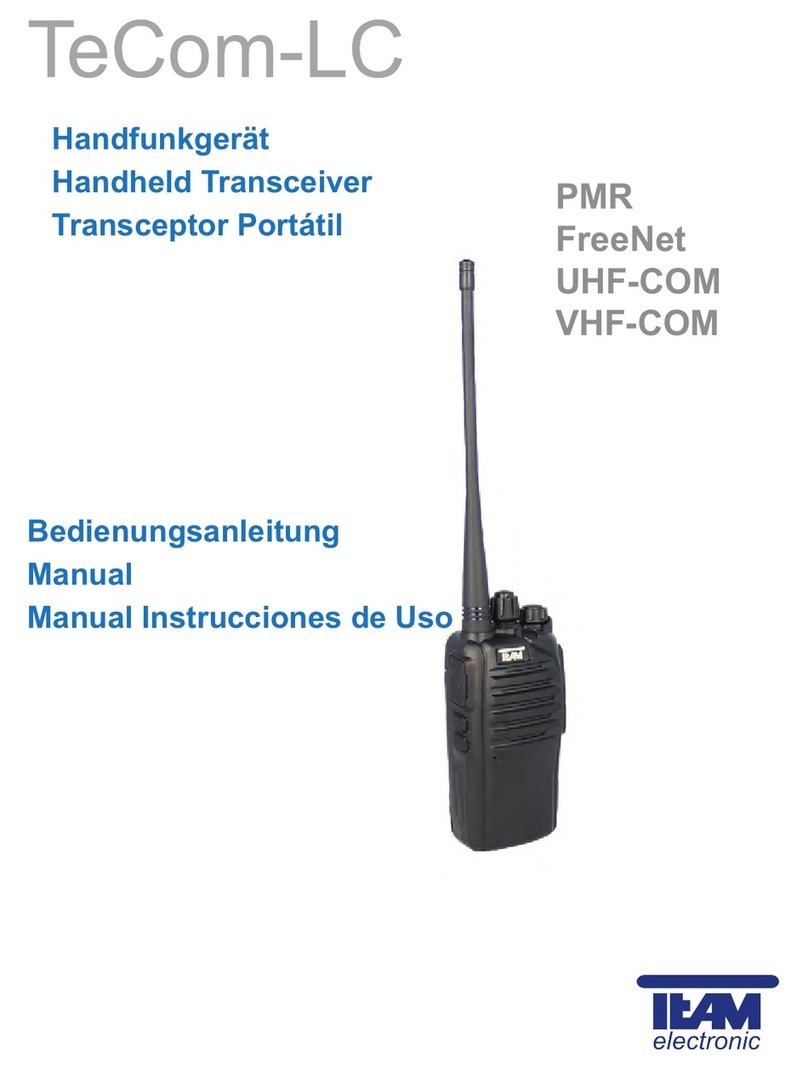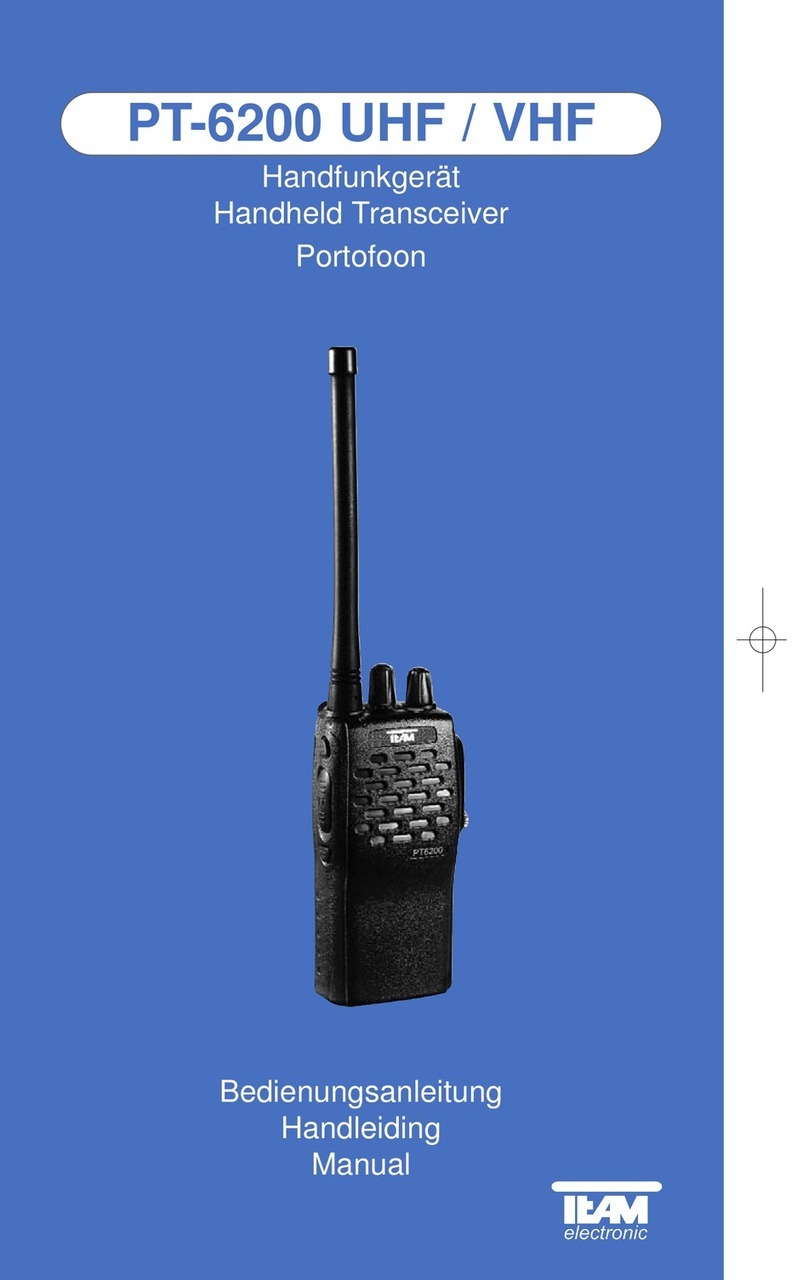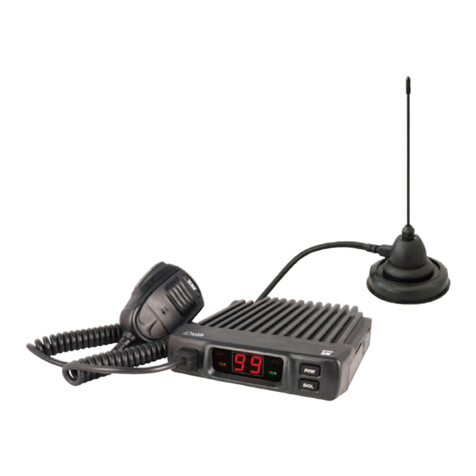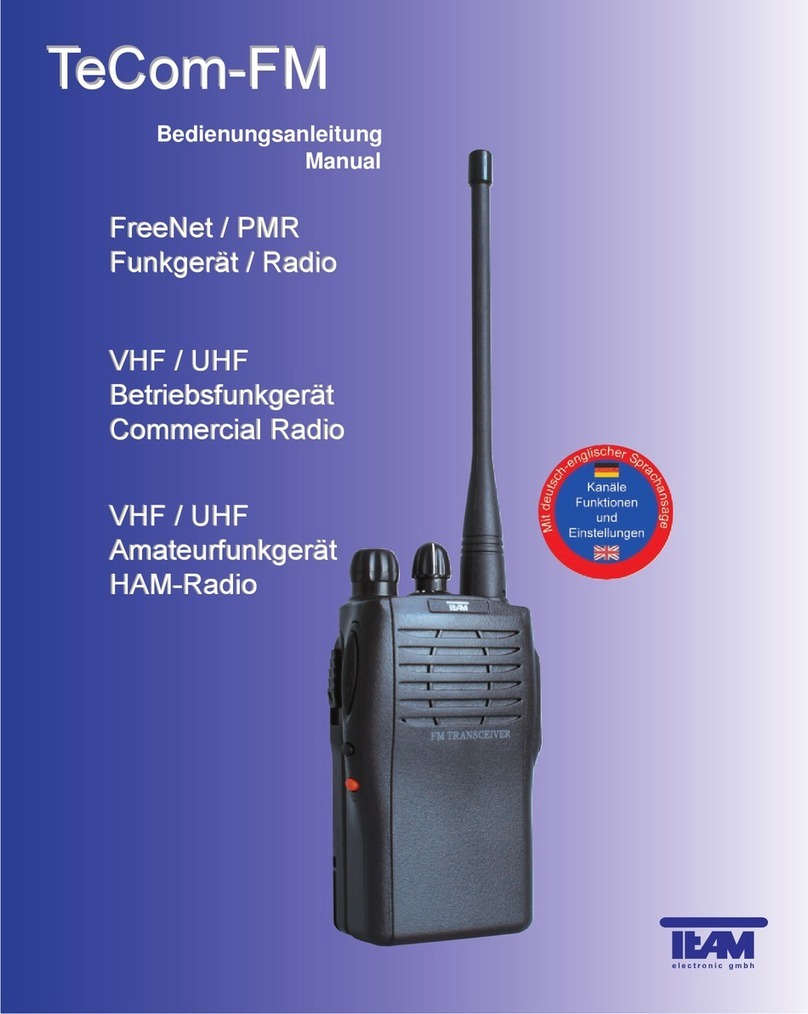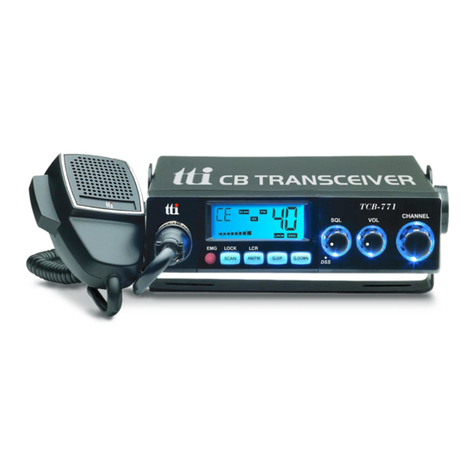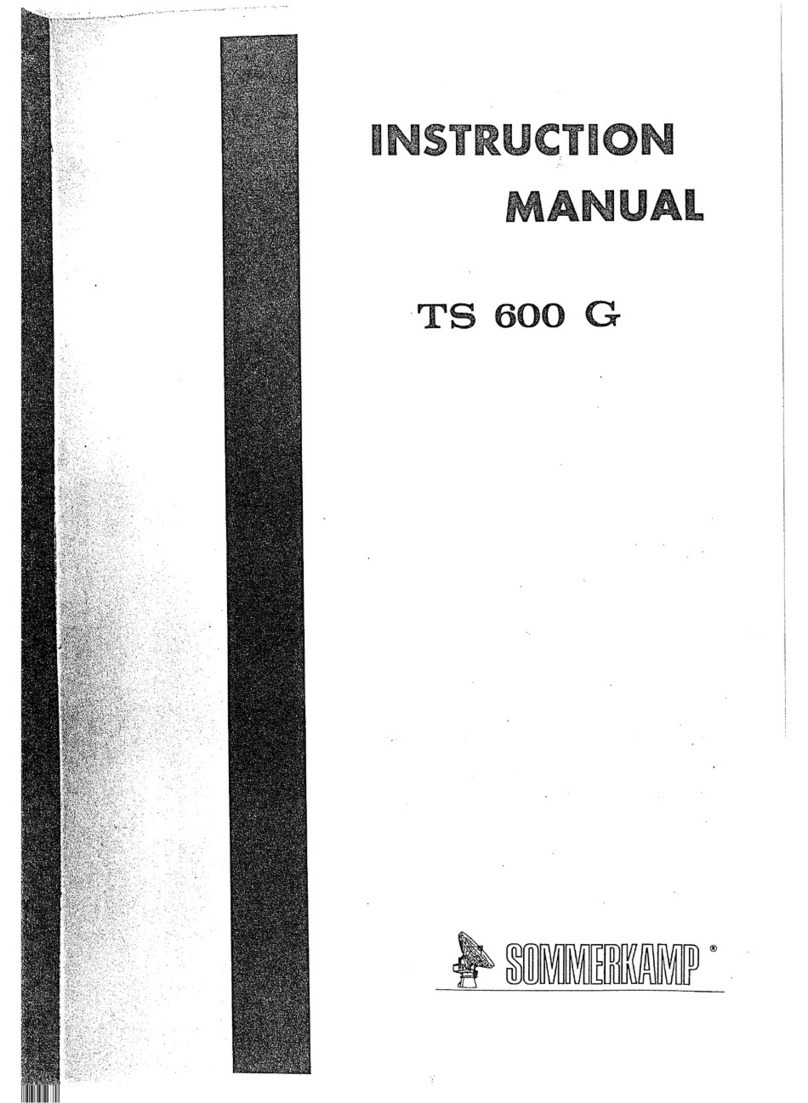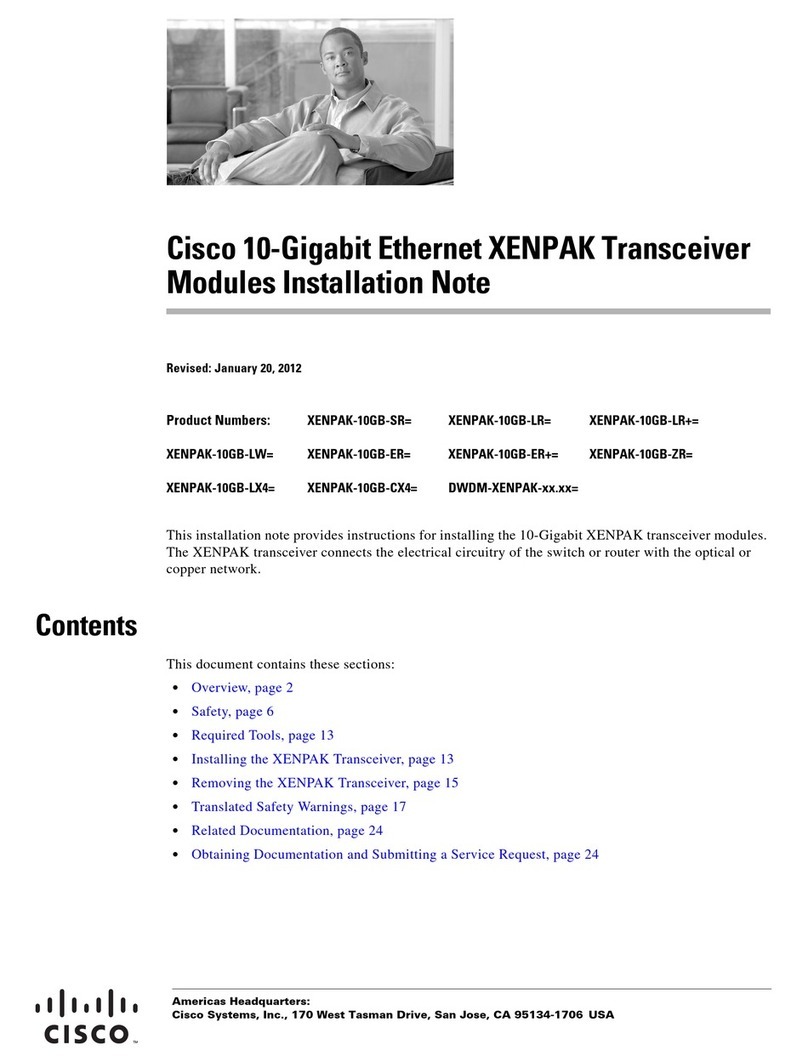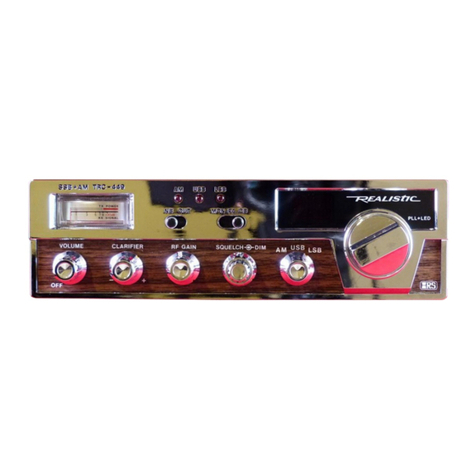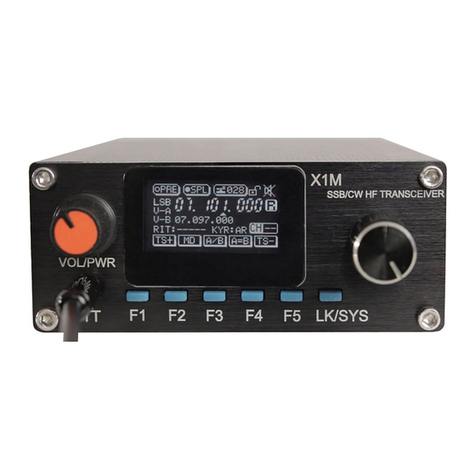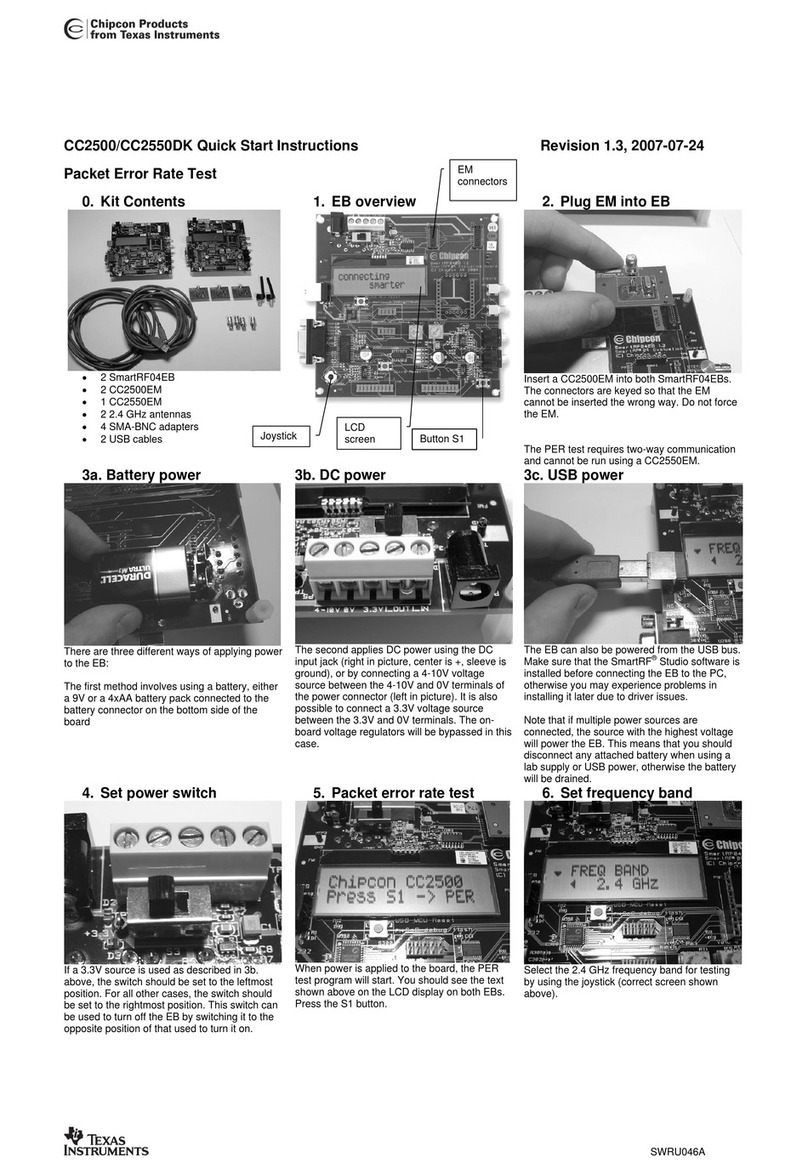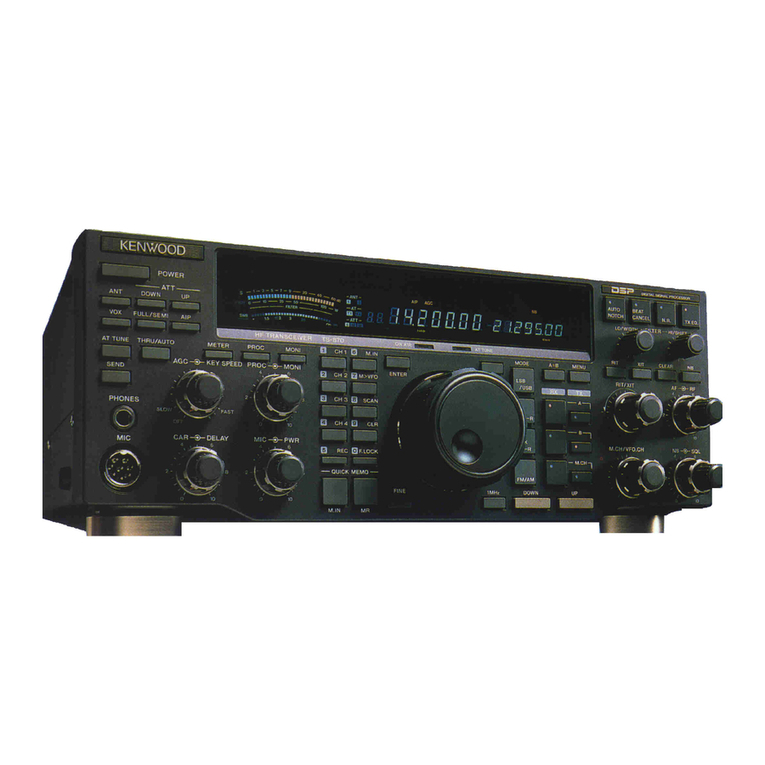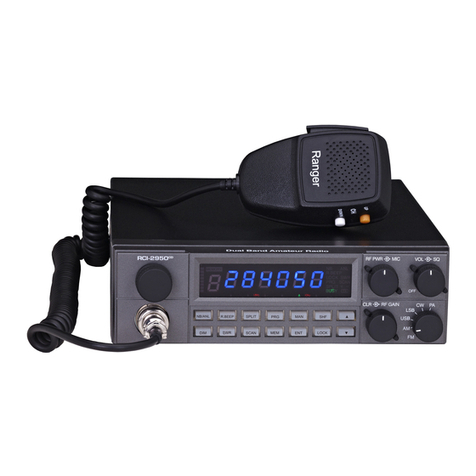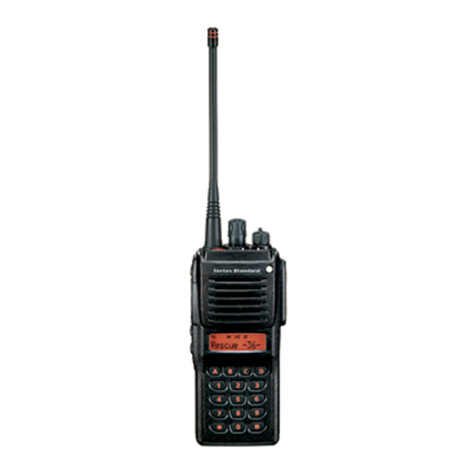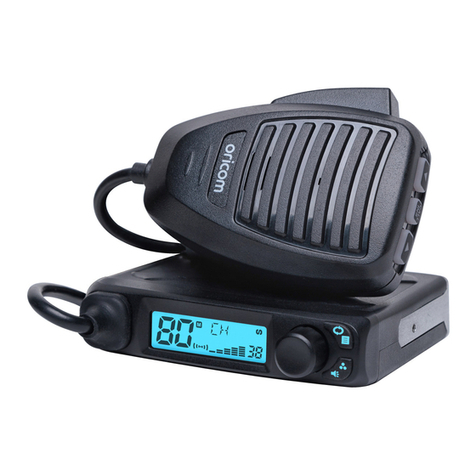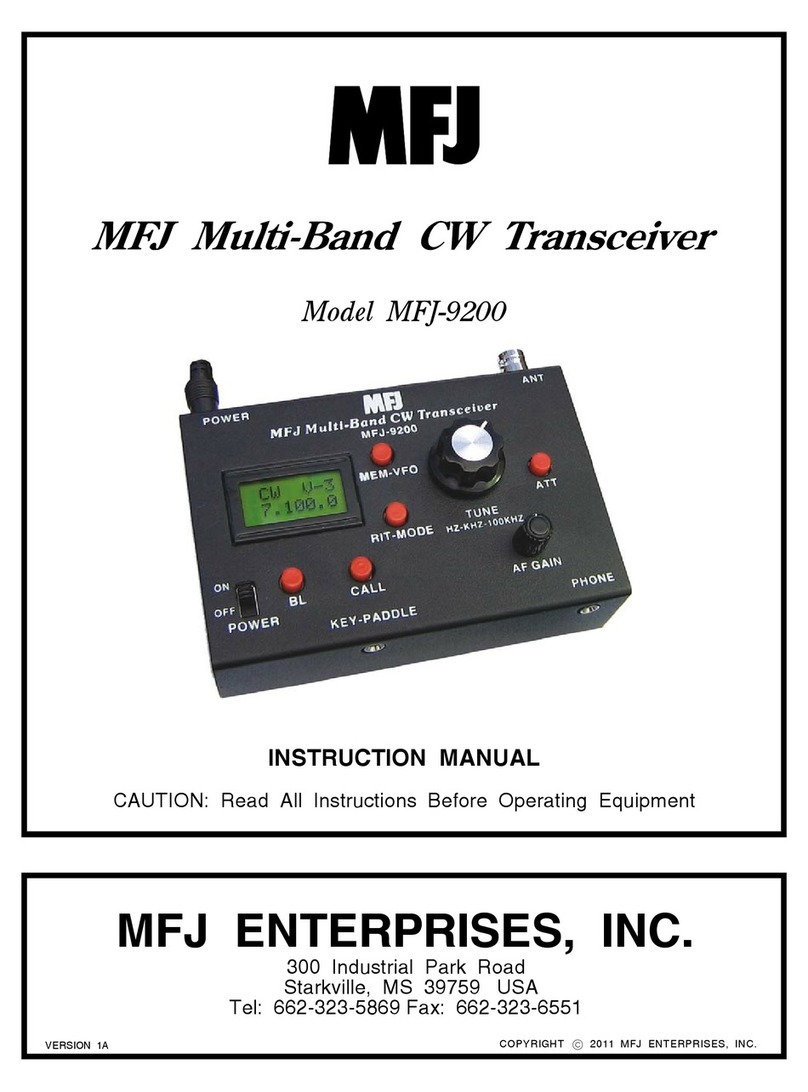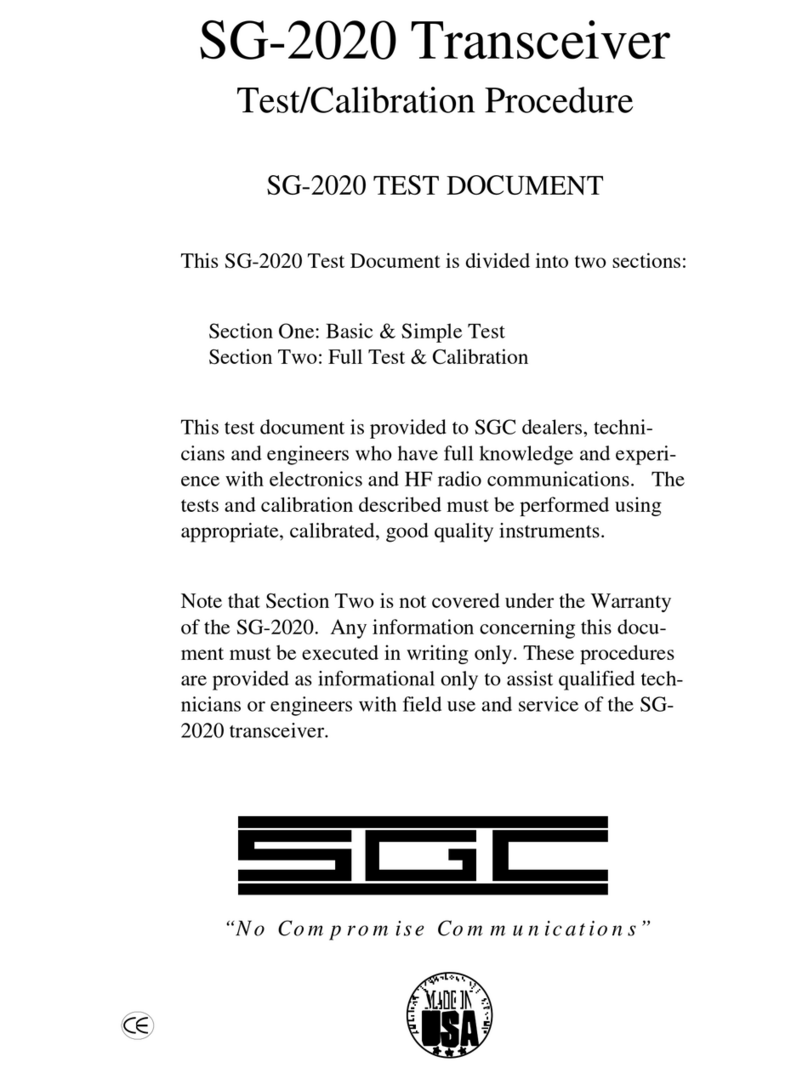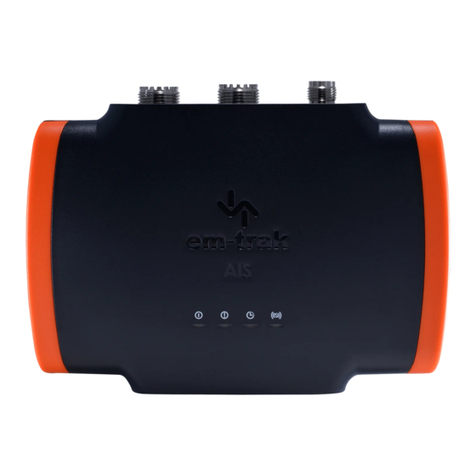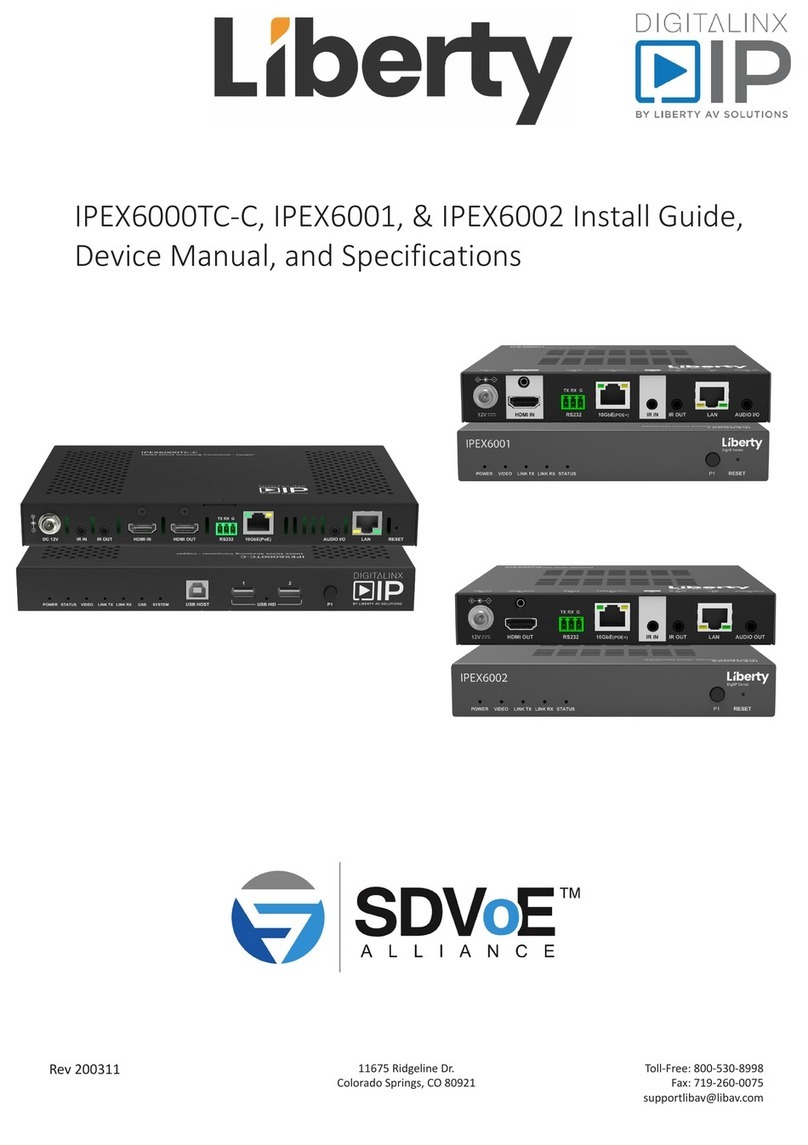Team TeCom-IPZ5 User manual

TeCom-IPZ5
Handfunkgerät
Handheld Transceiver
Transceptor Portátil
Ricetrasmettitore Palmare
PMR
FreeNet
UHF-COM
VHF-COM
Bedienungsanleitung
Manual
Manual Instrucciones de Uso
Manual d’Uso
tecom-ipz5_manual_final_25-7-14:Layout 1 7/25/2014 11:55 AM Seite 1

Sehr geehrte Kundin, sehr geehrter Kunde,
es freut uns, dass Sie sich für den Kauf eines, nach IP67 spritzwassergeschüt-
zen, TEAM TeCom-IPZ5 entschieden haben. Um einen einwandfreien Betrieb zu
gewährleisten und um die verfügbaren Funktionen im vollen Umfang nutzen zu
können, bitten wir Sie die nachfolgende Bedienungsanleitung vor Inbetriebnahme
des Gerätes gründlich zu lesen.
Das TeCom-IPZ5 ist in den folgenden vier Versionen erhältlich.
TeCom-IPZ5 PMR - Art-Nr. PR8088
Das PMR-Funkgerät darf jeder anmelde- und gebührenfrei in den Ländern
gemäß der beiliegenden Konformitätserklärung betreiben. Es sind die acht PMR-
Kanäle auf 446 MHz mit der maximal zulässigen Ausgangsleistung von 500 mW
programmiert. Eine Veränderung der programmierten Frequenzen, der Sendelei-
stung oder der Bandbreite des Geräts ist nicht zulässig und führt zum Erlöschen
der Betriebsgenehmigung.
TeCom-IPZ5 Freenet - Art-Nr. PR8089
Das FreeNet-Funkgerät darf jeder anmelde- und gebührenfrei in den Ländern
gemäß der beiliegenden Konformitätserklärung betreiben. Es sind die sechs
FreeNet-Kanäle auf 149 MHz mit der maximal zulässigen Ausgangsleistung von
500 mW programmiert. Eine Veränderung der programmierten Frequenzen, der
Sendeleistung oder der Bandbreite des Geräts ist nicht zulässig und führt zum
Erlöschen der Betriebsgenehmigung.
TeCom-IPZ5 UHF-COM - Art.-Nr. PR8090
Das Betriebsfunkgerät ist genehmigungs- und gebührenpflichtig und darf nur in
den Ländern gemäß der beiliegenden Konformitätserklärung betrieben werden.
Es dürfen nur behördlich genehmigte Funkfrequenzen zwischen 440-470 MHz,
Sendeleistungen und Bandbreiten programmiert werden. Die Programmierung
darf nur von einem autorisierten Fachhändler durchgeführt werden.
TeCom-IPZ5 VHF-COM - Art.-Nr. PR8091
Das Betriebsfunkgerät ist genehmigungs- und gebührenpflichtig und darf nur in
den Ländern gemäß der beiliegenden Konformitätserklärung betrieben werden.
Es dürfen nur behördlich genehmigte Funkfrequenzen zwischen 136-174 MHz,
Sendeleistungen und Bandbreiten programmiert werden. Die Programmierung
darf nur von einem autorisierten Fachhändler durchgeführt werden.
Für die Programmierung des TeCom-IPZ5 benötigen Sie die optional erhältliche
Software, T-UP25 PMR-FN für die PMR- und FreeNet-Version, sowie T-UP25 COM
für die Betriebsfunkversionen VHF- und UHF-COM (CD-ROM für Windows XP/ 7/8
und Datenüberspielkabel). Das Datenüberspielkabel ist wahlweise mit einem seriel-
len 9-Pin Anschlussstecker oder mit einem USB-Verbindungsstecker erhältlich.
DeutschDeutsch
Inhaltsverzeichnis
Seite
ALLGEMEIN 4
Vor Inbetriebnahme 4
Pflege 4
Übersicht der Elemente und Funktionen 4 - 6
GRUNDFUNKTIONEN 7
Antenne 7
Akkupack 7
Laden des Akkupacks 7
Ein- und Ausschalten 7
Einstellen der Lautstärke 7
Kanalwahl 8
Senden 8
Empfang 8
TASTENFUNKTIONEN 8
PTT Sendetaste 8
Multifunktionstasten 8 - 9
Alarmtontaste 9
FUN-Taste 9
MENÜ 10 - 12
SCAN (Kanalsuchlauf), PRI (Vorangskanal-Suchlauf),
VOX, POW (Sendeleistung-Anzeige), SQL (Rauschsperre),
LED (Hintergrundbeleuchtung), BEEP (Warnton),
KEYBO (Tastatursperre), TOT (Sendezeitbegrenzung),
SCANS (Suchlaufart), VOICE (Sprachansage),
CTCSS/DCS, NAME (Kanalname), ROGER
5-TON SELEKTIVRUF 13
ANSCHLUSS 13
CTCSS / DCS 50
TECHNISCHE DATEN 51
tecom-ipz5_manual_final_25-7-14:Layout 1 7/25/2014 11:55 AM Seite 2

DeutschDeutsch
4 5
ALLGEMEIN
Vor Inbetriebnahme
Bitte überprüfen Sie die Ware sofort beim Empfang auf Vollständigkeit gemäß der
folgenden Liste. Informieren Sie Ihren Händler sofort bei Unvollständigkeit.
Lieferumfang:
Pflege
Für die optimale Lebensdauer und Funktionstüchtigkeit Ihres Geräts sollten Sie die
folgenden Hinweise beachten.
wVersuchen Sie nicht das Gehäuse zu öffnen. Unsachgemäßes Öffnen des Ge-
räts kann Schäden zur Folge haben. Des weiteren verlieren Sie jegliche Gewähr-
leistungsansprüche.
wVerwenden Sie zum Laden des Akkupacks nur das im Lieferumfang enthaltene
Ladegerät.
wBewahren Sie das Gerät niemals an Plätzen auf, welche dem direkten Sonnen-
licht oder anderen Hitzequellen ausgesetzt sind. Hohe Temperaturen können die
Lebensdauer bestimmter elektronischer Bauteile beeinträchtigen und Plastikteile
können schmelzen.
wBitte bewahren Sie das Gerät nicht in staubigen oder verschmutzen Räumen auf.
wSetzen Sie das Gerät keinen Flüssigkeiten aus. Feuchtigkeit kann zu Korrodie
rung der Bauteile und Platinen führen.
wSollte das Gerät ungewöhnlich heiß werden, ungewöhnliche Gerüche abgeben
oder es zu einer Rauchentwicklung kommen, schalten Sie bitte das Gerät sofort
ab und entnehmen den Akkupack. Kontaktieren Sie bitte sofort Ihren Händler.
wSenden Sie niemals ohne Antenne. Eine Beschädigung der Endstufe könnte die
Folge sein.
Übersicht der Elemente und Funktionen
> Max. Ausgangsleistung
FreeNet : 500 mW PMR : 500 mW
VHF : 5 W UHF : 4 W
> 256 Kanäle verfügbar
UHF : 400 - 470 MHz VHF : 136 - 174 MHz
PMR : 8 Kanäle PMR 446 MHz FreeNet : 6 Kanäle FreeNet 149 MHz
> Bandbreite
FreeNET / PMR : 12,5 kHz
UHF / VHF : 12,5 / 20 / 25 kHz
> 5-Ton Selektivruf (1 x Geber, 9 x Nehmer (max. 1 pro Kanal))
> Scrambler (1-8)
> Compander
> 50 CTCSS und 104 DCS
> LCD Anzeige mit Hintergrundbeleuchtung
> Scrambler (8 Verschlüsselungen)
> Batteriesparfunktion
> Tastatursperre
> Sendeblockade auf besetzten
Kanälen (BCL)
> UKW Radio
> Tastatursperre
> Sendezeitbegrenzung (TOT)
> VOX
> Relaiston 1450Hz / 1750Hz / 2315Hz
> Batteriesparfunktion
> programmierbarer Kanalname
tecom-ipz5_manual_final_25-7-14:Layout 1 7/25/2014 11:55 AM Seite 4

6 7
Laden des Akkupacks
Vor dem ersten Betrieb sollte der Akkupack (17) komplett geladen werden. Die
durchschnittliche Ladedauer beträgt etwa 3 Stunden. Während des Ladevorgangs
leuchtet die LED rot. Ist der Ladevorgang beendet leuchtet die LED grün. Nehmen
Sie den Akku nach Ende des Ladevorgangs aus der Ladeschale. Überladen des
Akkus verkürzt dessen Lebensdauer.
Ein- und Ausschalten
Um das Gerät einzuschalten, drehen Sie den Ein- / Ausschalter (5) im Uhrzeiger-
sinn über die Sperre hinweg. Bei aktiviertem Warnton wird der Einschaltevorgang
akustisch bestätigt.
Um das Gerät auszuschalten, drehen Sie bitte den Ein- / Ausschalter gegen den
Uhrzeigersinn über die Sperre hinweg.
Einstellen der Lautstärke
Um nach dem Einschalten die optimale Lautstärke einstellen zu können, aktivieren
Sie bitte die Monitorfunktion (hierzu muss eine der Multifunktionstasten PF1/2
(10)/(11) mit der Monitorfunktion programmiert sein) und stellen mit dem kombi-
nierten Ein-/Aus-/Lautstärke-Regler (5) die gewünschte Lautstärke ein.
DeutschDeutsch
GRUNDFUNKTIONEN
Antenne
Hinweis: In der PMR-Version ist die Antenne fest mit dem
Gerät verbunden.
Akkupack
Um den Akkupack (17) an das Gerät zu montieren, legen Sie den Akku ein und
drücken den unteren Teil gegen das Gehäuse, während sie gleichzeitig den Ver-
schluss gegen den Akku drücken bis er einschnappt.
Um den Akkupack zu entfernen, drücken Sie bitte den Verschluss auf der Rück-
seite des Akkupacks nach unten und entfernen den Akkupack aus dem Gerät.
9
11
10
17
16
8
1 - Antenne
2 - LCD Anzeige
3 - Kanalwahldrehschalter
4 - Mikrofon
5 - Ein/Aus - Lautstärkeregler
6 - LED Leuchte
7 - Lautsprecher
8 - FUN Taste
9 - PTT-Sendetaste
10 - Multi-Funktionstaste PF1
11 - Multi-Funktionstaste PF2
12 - Menü Taste
13 - ENT Taste
14 - VFO/MR Taste
15 - Alarm Taste
16 - Ohrhörer-Mikrofon Anschluss
17 - Akkupack Li-Ion, 1600 mAh
1
4
13
12
7
3
5
6
11
10
8
14
2
9
15
tecom-ipz5_manual_final_25-7-14:Layout 1 7/25/2014 11:55 AM Seite 6

DeutschDeutsch
8 9
Kanalwahl
Für die Kanalwahl stehen der Kanalwahldrehschalter (3) zur Verfügung. Die Kanäle
werden in der programmierten Reihenfolge durchgeschaltet.
Senden
Zum Senden halten Sie bitte die Sendetaste (9) bis kurz nach Beendigung Ihrer
Nachricht gedrückt. Für eine optimale Signalübertragung sprechen Sie bitte mit
mittellauter Stimme in einem Abstand von ca. 10 cm zum Mikrofon (4).
Während des Sendevorgangs leuchtet die Kontroll-LED (6) rot auf.
Nach dem Loslassen der Sendetaste kehrt das Gerät automatisch wieder in den
Empfangsmodus zurück.
Empfang
Beim Empfang eines Signales leuchtet die Kontroll-LED (6) grün auf.
Ist die Empfangsfrequenz mit einer CTCSS- / DQT-Kodierung belegt ist, sind nur
Signale mit derselben Kodierung hörbar. Signale mit einer anderen CTCSS-/DCS-
Kodierung werden ausgefiltert. D.h. die grüne Kontroll-LED leuchtet jedoch ist kein
Signal im Lautsprecher hörbar.
TASTENFUNKTIONEN
PTT Sendetaste (9)
Die Sendetaste (9) befindet sich auf der linken Geräteseite. Drücken der Sendeta-
ste schaltet das Gerät in den Sendemodus. Während des Sendens leuchtet die
LED (6) rot auf.
Multifunktionstasten (10) (11)
Die Multifunktionstasten PF1 (10) und PF2 (11) befindet sich unterhalb der Sende-
taste (9). Jede Taste kann mit max. zwei Funktionen belegt werden, die durch kur-
zes oder langes Drücken der Taste aktiviert werden. Sie können per Software
wahlweise mit folgenden Funktionen belegt werden:
Relaiston 1450 Hz Monitor
Relaiston 1750 Hz Scan (Kanalsuchlauf)
Relaiston 2315 Hz 5-Ton Selektivruf Senden
Relaiston
Der per Software programmierte Relaiston wird durch Tastendruck ausgesendet.
Zur Auswahl stehen die Relaistöne 1450 kHz, 1750 kHz und 2315 kHz.
Monitor
Die Monitorfunktion wird per Tastendruck aktiviert und muss durch erneutes Drük-
ken deaktiviert werden.
Scan
Bei aktiver Kanalsuchlauffunktion wird die via Software programmierte Kanalsuch-
laufliste durchsucht. Diese Funktion ist nur verfügbar wenn mindestens zwei Ka-
näle der Kanalsuchlaufliste hinzugefügt wurden. Per Software wird bestimmt ob ein
Kanal für die Kanalsuchfunktion freigegeben ist oder nicht.
5-Ton Selektivruf Senden
Der per Software programmierte 5-Ton Selektivruf wird per Tastendruck gesendet.
Diese Funktion ist nur verfügbar wenn der 5-Ton Selektivruf eingerichtet ist und der
aktuelle Kanal mit der 5-Ton Selektivruf Funktion belegt ist.
Alarmtaste (15)
Die Alarmton-Funktion wird per Software aktiviert/deaktiviert.
Nach kurzem Drücken der orangen Alarmtontaste (15) ertönt für ca. 30 Sekunden
ein konstanter Alarmton. Danach verweilt das Gerät solange im Sendemodus bis
die Alarmtonfunktion durch Drücken der PTT-Taste beendet wird.
Ist die Alarmtonfunktion deaktiviert, ertönt nach dem Drücken der Taste, falls die
Beep-Funktion programmiert ist, ein Doppelton.
FUN-Taste (8)
Weitere Funktionen sind durch Drücken der FUN-Taste in Kombination mit anderen
Tasten abrufbar:
FUN + PTT (9)
Umstellung der Sendeleistung Hoch / Niedrig
FUN + ENT (13)
Tastatursperre Ein / Aus
Im aktiven Zustand erscheint das Schlüsselsymbol in der Anzeige.
FUN + PF1 (10)
Aktivierung / Deaktivierung der UKW-Radiofunktion.
Das Drücken PTT-Taste pausiert die Radiofunktion für die Zeit des Sendens.
Der gewünschte Sender kann mit Hilfe des Kanalwahldrehschalters (3) im Frequenz-
bereich 88 MHz bis 107,9 MHz direkt eingestellt werden.
Zum Auffinden einer besetzten UKW-Radiofrequenz steht die Suchfunktion zur Verfü-
gung. Starten Sie den Suchlauf durch Drücken der PF1 (hoch)/2 (runter) Taste (11).
Per Software können max. 6 UKW-Radiokanäle gespeichert werden. Zum Abrufen die-
ser Kanäle verwenden Sie bitte folgende Tastenkombinationen nach dem Einschalten
der UKW-Radiofunktion durch Drücken der Tastenkombination FUN - PF1 (10):
Kanal 1: VFO/MR (14) + FUN (8) Kanal 4: VFO/MR (14) + MENU (12)
Kanal 2: VFO/MR (14) + PF1 (10) Kanal 5: VFO/MR (14) + ENT (13)
Kanal 3: VFO/MR (14) + PF2 (11) Kanal 6: VFO/MR (14) + Notruftaste (15)
tecom-ipz5_manual_final_25-7-14:Layout 1 7/25/2014 11:55 AM Seite 8

DeutschDeutsch
10 11
LED 007 - Hintergrundbeleuchtung
Auto (automatisch) / ON (Ein)/ OFF (Aus)
BEEP 008 - Warnton
ON (Ein)/ OFF (Aus); akustische Bestätigung jeder Tasteneingabe
KEYBO 010 - Tastatursperre
MANUAL (manuell) / AUTO (automatische Aktivierung nach ca. 20 Sekunden)
Bei aktiver Tastatursperre sind alle Tasten gesperrt. Nur die Sendetaste, sowie die
FUN-Taste sind verfügbar.
Der aktive Zustand wird in der Anzeige durch das Schloss Symbol angezeigt, in der
linken oberen Ecke.
TOT 011 - Sendezeitbegrenzung
Off (Aus) / 30s - 270s in 30-Sekunden-Schritten
Im aktivierten Zustand wird der Sendebetrieb automatisch nach der eingestellten
TOT-Zeit abgebrochen.
SCANS 012 - Kanalsuchlaufart
Es stehen drei Suchlaufarten zur Auswahl
TO : Time-Operated-Scan – zeitgesteuerter Kanalsuchlauf
Das Gerät verweilt für eine bestimmte Zeit auf einem besetzten
Kanal um dann fortzufahren, unabhängig ob auf dem besetzten
Kanal weiterhin Signale empfangen werden oder nicht.
CO : Carrier-Operated-Scan – signalgesteuerter Kanalsuchlauf
Im CO-Modus verweilt das Gerät solange auf einem besetzten
Kanal bis das Signal verstummt, bevor die Kanalsuchlauffunktion
fortfährt.
SE : Search-Scan - einfacher Kanalsuchlauf
Im SE-Modus wird die Kanalsuchlauf-Funktion beendet sobald ein
besetzter Kanal gefunden wird. Das Gerät verweilt auf dem be-
setzten Kanal und beendet die Suchlauffunktion.
VOICE 013 - Sprachansage
OFF (Aus) / English (Englisch)
Aktiviert die englische Sprachansage
C-CDC 015 - CTCSS/DCS Kodierungen für Sende- und Empfangsfrequenz
OFF (Aus) / 50 CTCSS / 104 DCS Kodierungen*
R-CDC 016 - CTCSS/DCS Kodierung für Empfangsfrequenz
OFF (Aus) / 50 CTCSS/ 104 DCS Kodierungen*
MENÜ
Folgende Einstellungen werden im Menü verwaltet. Zur Einstellungsänderung bitte
folgende Schritte befolgen:
1. Zum Öffnen des Menüs die MENÜ Taste (12) drücken.
2. Zum Auswählen der Menüpunkte den Kanalwahlschalter (3) drehen.
3. Aktivieren sie die ausgewählten Einstellung durch Drücken der ENT Taste (13).
4. Wählen Sie die gewünschte Einstellung durch Drehen des Kanalwahlschalters
(3) und bestätigen Sie die Auswahl durch Drücken der ENT Taste (13).
5. Zum Verlassen des Menüs drücken sie die VFO/MR Taste (14).
SCAN 001 - Kanal-Suchlauf
Der Kanalsuchlauf wird gestartet durch Drücken der ENT Taste (12). Es werden
die per Software für den Kanalsuchlauf freigegebenen Kanäle durchsucht.
PRI 002 - Vorrangskanal-Suchlauf
Der Vorrangskanalsuchlauf wird gestartet durch Drücken der ENT Taste (12).
Zwischen den einzelnen Kanälen der Kanalsuchlaufliste wird jeweils der Vor-
rangskanal eingeschoben. Der Vorrangskanal wird durch Software-Programmie-
rung bestimmt. Statt der beispielhaften Suchlauf-Abfolge von
1 - 2 - 4 - 5 - 7 - 8 wird beim Vorrangskanalsuchlauf, mit dem festgelegten Vor-
rangskanal 4, folgende Reihenfolge verwendet: 4 -1- 4 - 2 - 4 - 5- 4 - 7- 4 - 8.
VOX 003 - sprachgesteuerte Signalübertragung
Gain Level
Empfindlichkeit der VOX-Funktion
Einstellmöglichkeiten: Stufen 1 - 9; Stufe 9 entspricht der größten Empfindlichkeit.
Delay Time
Verweilzeit im Modus der Signalübertragung nach dem Ende der Signalübertragung
Einstellmöglichkeiten - 1 / 2 / 3 / 4 (in Sekunden)
POW 004 - Leistungseinstellung
H= hohe Sendeleistung
L= niedrige Sendeleistung
Anmerkung: bei den Versionen PMR und FreeNet beträgt die hohe Sendeleistung
500 mW und die niedrige Sendeleistung ca. 300 mW.
In den Betriebsfunkvarianten UHF- / VHF-COM können die Werte für Hund L
gemäß der Zulassung durch die Behörde programmiert werden.
SQL 005 - Rauschunterdrückung
0-9; bei 0 ist die Rauschunterdrückung deaktiviert, bei 9 ist die Schwelle am höch-
sten eingestellt.
tecom-ipz5_manual_final_25-7-14:Layout 1 7/25/2014 11:55 AM Seite 10

DeutschDeutsch
12 13
T-CDC 017 - CTCSS/DCS Kodierung für Sendefrequenz
OFF (Aus) / 50 CTCSS/ 104 DCS Kodierungen*
* = abhängig von der Software-Programmierung werden entweder die CTCSS
oder DCS Kodierungen angezeigt. Ist keine Kodierungsart vorbelegt, werden die
CTCSS-Kodierungen angezeigt.
NAME 021 - Kanalname
ON (Ein) / OFF (Aus);
es wird der via Software programmierte Kanalname angezeigt
ROGER 022 - Roger Ton
ROGON (Ein) / ROGOFF (Aus)
Aktiviert den Rogerton.
Hinweis:
Mit der optionalen Software T-UP25 können, neben den zuvor erwähnten Einstell-
möglichkeiten, weitere Parameter eingestellt werden, wie z.B. Batteriesparfunktion,
Roger-Ton, Sendesperre auf besetzten Kanälen, Compander, etc.
Für die Betriebsfunkvarianten wird die Einstellung der Sendeleistung ebenfalls mit
der Software vorgenommen.
5-TON SELEKTIVRUF
Das TeCom-IPZ5 verfügt über eine 5-Ton Selektivruf Funktion mit den Möglichkeiten
des Einzel- und Gruppenrufes, deren Parameter mit der Software T-UP25 program-
miert werden.
Allgemeine Funktionsweise:
Jedes Gerät wird mit einer eigenen, fünfstelligen Gerätekennung (Decode - Nehmer),
sowie max. 9 5-Ton-Selektivruf-Kodierungen (Encode - Geber) programmiert.
Bei aktiviertem 5-Ton Selektivruf wird durch Drücken der mit 5-Ton-Selektivruf beleg-
ten Funktionstaste PF1/2 die programmierte Sendekodierung geschickt. Stimmen bei
einem Gerät dessen Gerätekennung mit der gesendete 5-Tonfolge überein, so wird
die Gerätekennung des Senders in der Anzeige dargestellt (soweit eine Anzeige vor-
handen ist) und das Gerät reagiert in der programmierten Art und Weise, z.B. der
Lautsprecher öffnet, das Klingelzeichen ertönt oder eine automatische Empfangsbe-
stätigung wird zurück gesendet.
Hinweis: Zum Funktionieren des 5-Ton Selektivrufes muss eine der Multifunkionsta-
sten PF1/2 Funktion Option Signal Call belegt sein.
Zum Senden einer 5-Tonfolge beachten Sie bitte folgende Schritte:
1. Drücken sie die mit Option Signal Call belegten Multifunktionstaste PF1 oder PF2.
2. Drücken Sie die Sendetaste (9). Wird die Geräte-Kennung eines anderen
TeCom-IPZ5 gesendet, welches auch die 5-Ton Selektivruffunktion eingeschaltet
hat, so öffnet bei dem anderen Funkgerät der Lautsprecher und es ertönt ein Klin-
gelzeichen, soweit die Beep-Funktion aktiviert ist.
Stimmt die gesendete Geräte-Kennung nicht mit der Kennung des Empfängers
überein, öffnet der Lautsprecher nicht.
ANSCHLUSS
Das TeCom-IPZ5 verfügt über einen Kenwood-kompatiblen
Zubehör-Anschluss (3,5 / 2,5 mm - Stereo / Stereo), der
auch für das Datenübertragungskabel zum Programmieren
mit der Software T-UP25 verwendet wird.
Weiteres passendes Zubehör finden Sie im aktuellen
TEAM-Katalog.
tecom-ipz5_manual_final_25-7-14:Layout 1 7/25/2014 11:55 AM Seite 12

14 15
Dear Customer,
Thank you for buying a splashwater-restistant, IP67 approved, TEAM TeCom-
IPZ5. TEAM Electronic stands for high-quality radio communication.
To fully understand the various functions and the possible settings and to en-
sure the proper operation of the radio, we recommend to read this manual
prior to first time use.
The TeCom-IPZ5 is available in these four versions:
PR8088 TeCom-IPZ5 PMR : programmed with 8 PMR* channels, 500 mW tx
power, bandwidth 12.5 kHz, no registration or
fees apply
PR8089 TeCom-IPZ5 FreeNet : programmed with 6 FreeNet** channels,
500 mW tx power, bandwidth 12.5 kHz,
no registration or fees apply
PR8090 TeCom-IPZ5 UHF : commercial radio; 256 channels programmable;
registration and fees apply; only assigned
frequencies and parameters are allowed to be
programmed; bandwidth 12.5 kHz or 20 kHz;
max. TX power 4 W; UHF 440 - 470 MHz
PR8091 TeCom-IPZ5 VHF : commercial radio; 256 channels programmable;
registration and fees apply; only assigned
frequencies and parameters are allowed
to be programmed; bandwidth 12.5 kHz or 20 kHz;
max. TX power 5 W; VHF 136 - 174 MHz
Programming of the TeCom-IPZ5 is done via the additional software T-UP25,
which is available in the versions PMR-FN and COM for Windows XP / 7 / 8.
A data transfer cable is included in the T-UP25 scope of delivery.
* = PMR Frequencies ** = FreeNet Frequencies
1 - 446.00625 MHz 1 - 149.0250 MHz
2 - 446.01875 MHz 2 - 149.0375 MHz
3 - 446.03125 MHz 3 - 149.0500 MHz
4 - 446.04375 MHz 4 - 149.0875 MHz
5 - 446.05625 MHz 5 - 149.1000 MHz
6 - 446.06875 MHz 6 - 149.1125 MHz
7 - 446.08125 MHz
8 - 446.09375 MHz
Table of Contents
page
GENERAL 16
Scope of Delivery 16
Maintenance 16
Features 16 - 18
BASIC FUNCTIONS 19
Antenna 19
Battery Pack 19
Charging 19
On / Off 19
Volume 19
Channel Selection 19
Transmit 20
Reception 20
KEY FUNCTIONS 20
PTT Transmit Key 20
Multi-Function Keys 20
Alarm Tone Key 21
FUN-Key 21
MENU 22 - 24
SCAN (channel scan), PRI (priority channel scan), VOX,
POW (tx power), SQL (squelch), LED (backgroud light),
BEEP (warn tone), KEYBO (key lock), TOT (time-out-timer),
SCANS (scan types), VOICE (annunciation), CTCSS/DCS,
NAME (channel name), ROGER
5-TONE SELECTIVE CALLING 25
ACCESSORY JACK 25
CTCSS/DCS 50
SPECIFICATIONS 51
EnglishEnglish
tecom-ipz5_manual_final_25-7-14:Layout 1 7/25/2014 11:55 AM Seite 14

16 17
GENERAL
Scope of Delivery
Unpack the equipment carefully. We recommend you to identify the listed items be-
fore discarding the packing material. If any items are missing or have been damaged
during shipment, please contact the dealer immediately.
Maintenance
For optimal performance and functionality of the TeCom-IPZ5, please pay attention
to the following advices.
wDo not open the case of the radio. Improper opening may cause damages and
warranty claims are forfeited.
wFor charging of the rechargeable battery pack, only use the charger SLG-
TeCom-IPZ5 that is included in the scope of delivery.
wNever expose the radio to direct sunlight or other heat sources. High temperatures
will diminish the longevity of certain components and plastic parts may melt and
deform.
wNever store the radio in dusty or dirty areas.
wDo not expose the radio to any liquid. Humidity max cause corrosion of the pcb
and its components.
wShould the radio generate unusual heat or emit unusual smell or even smoke,
please turn the radio off immediately and remove the battery pack. Contact your
dealer.
wNever transmit without antenna. A damage of the power amplifier may be the result.
Features
> max. tx power
FreeNet : 500 mW PMR : 500 mW
VHF : 5 W * UHF : 4 W *
> 256 channels available
UHF : 400 - 470 MHz VHF : 136 - 174 MHz
PMR: 8 channels PMR 446 MHz FreeNet : 6 channels FreeNet 149 MHz
> bandwidth
FreeNET / PMR : 12.5 kHz
UHF / VHF : 12.5 / 20 / 25 kHz
> 5-tone selective calling > busy channel lockout BCL
(1 decode, 9 encodes - 1 per channel) > compander
> scrambler (1-8) > transmit time limiter TOT
> 50 CTCSS and 104 DCS > programmable channel name
> LCD display with background illumination > fm radio
> battery saving function > TOT
> keylock > VOX
> repeater tone 1450 Hz / 1750 Hz / 2315 Hz
EnglishEnglish
tecom-ipz5_manual_final_25-7-14:Layout 1 7/25/2014 11:55 AM Seite 16

18 19
English
1 - antenna
2 - LCD
3 - rotary channel selector
4 - microphone
5 - On/Off - volume
6 - LED
7 - speaker
8 - FUN key
9 - PTT key
10 - multi-function key 1
11 - multi-function key 2
12 - menu key
13 - ENT key
14 - VFO/MR key
15 - alarm tone button
16 - ear-/microphone connector
17 - battery pack Li-Ion, 1600 mAh
9
11
10
17
16
8
1
4
13
12
7
3
5
6
11
10
8
14
2
9
15
BASIC FUNCTIONS
Antenna
In the PMR version, due to governmental regulations, the
antenna is fixed, i.e. non-detachable.
Battery Pack
To attach the battery pack (17), place the battery pack onto the radio and press the
bottom part close to the radio case and close the lock.
Charging
Prior to first use, the battery pack has to be charged completely. A completely
empty battery pack needs to be charged for approximately three hours. During the
charging process, the LED lights red. Once charging is completed, the LED lights
green.
Remove the battery pack out of the charger. Overcharging reduces the battery
packs longevity.
On / Off
To turn the radio on, turn the On / Off switch (5) clockwise beyond the barrier. A
beep tone is emitted if the beep tone function is activated.
To turn off the radio, please turn the On / Off switch (5) counterclockwise beyond
the barrier.
Volume Control
To set a comfortable volume level after turning the radio on, activate the monitor
function by pressing the according multi-functional key PF1/2 (11) or (12) ( which
has to be programmed via software) while adjusting the volume level with the com-
bined On/Off-Volume key (5).
Channel Selection
For channel selection, use the rotary channel selector (3) switch.
The channels are selected in the programmed order.
English
tecom-ipz5_manual_final_25-7-14:Layout 1 7/25/2014 11:55 AM Seite 18

20 21
Transmit
For transmission hold the PTT key (9) until the end of the message.
For best sound quality, talk into the microphone (4) with normal voice at a distance
of approximatly 10 cm.
During transmission the control LED (6) lights red.
Upon release of the PTT key (9) the radio returns automatically into reception mode.
Reception
Upon reception of a signal, the LED (6) lights green.
If the selected frequency is decoded with a CTCSS- / DCS-code, all signals that
are encoded with a different code will be muted. The green LED will light but no
signal will be audible.
KEY FUNCTIONS
PTT Key
The PTT key (9) is located at the left side of the radio. Pressing the PTT key will
switch the radio into transmission mode. The LED (6) will light red.
Multi-Function Keys
The multi function keys PF1 (10) and PF2 (11) are located below the PTT key (9).
Each of them are programmable via the software T-UP25 with two of the following
functions that are activated by pressing short or long:
relais tone 1450 Hz monitor
relais tone 1750 Hz scan (channel scan)
relais tone 2315 Hz 5-tone selective calling
relais tone
Transmits the programmed relais tone, 1450 kHz, 1750 kHz or 2315 kHz.
monitor
The monitor functions remains active until the key is pressed again.
scan
Start / stop the channel scan function by pressing the key. Each channel can be
added to or deleted from the scan list by software programming.
This function is only available if at least two channels are added to the scan list.
5-tone selective calling
Transmits the via software programmed 5-tone selective encode.
This function is only available if 5-tone selective calling is enabled and if the actual
channel is set for 5-tone selective calling.
EnglishEnglish
Alarm tone button
The alarm tone button is acticated via software. If activated, a short press of the but-
ton will start a 30 second long alarm tone. Once the tone stops, the radio remains in
transmission mode until the alarm tone function is stopped by pressing the PTT key.
Is the alarm tone function not activated, a short double tone will be audible, if the war-
ning tone function is active.
FUN-Taste (8)
Further functions are available when pressing the FUN key (8) in combination with other
keys.
FUN + PTT (9)
switch tx power high / low
FUN + ENT (13)
key lock On / Off
The key symbol appears once the function is activated. Only the PTT key (9) and
the FUN key (8) are available.
FUN + PF1 (10)
activates/deactivates the fm-radio function
Select the fm-radio frequency in the range of 88.5 MHz - 107.9 MHz by turning the
channel selector (3)
For channel scanning use the multi-function keys PF1 (10) (UP) and PF2 (11)
(DOWN).
Per software, up to 6 fm-radio frequencies can be stored. To recall these channels use
the following key combination after activating the radio function:
channel 1: VFO/MR (14) + FUN (8) channel 4: VFO/MR (14) + MENU (12)
channel 2: VFO/MR (14) + PF1 (10) channel 5: VFO/MR (14) + ENT (13)
channel 3: VFO/MR (14) + PF2 (11) channel 6: VFO/MR (14) + Notruftaste (15)
Pressing the PTT key (9), while the fm-radio is activated, will pause the fm-radio
function until the PTT key is released.
tecom-ipz5_manual_final_25-7-14:Layout 1 7/25/2014 11:55 AM Seite 20

EnglishEnglish
22 23
LED 007 - background light
Auto / ON / OFF
BEEP 008 - beep tone
ON / OFF; acoustic confirmation of each key entry
KEYBO 010 - key lock
MANUAL / AUTO (automatic activation after appr. 20 seconds)
All keys, except the PTT key (9) and the FUN key (8), are deactivated with the key
lock function.
The active state is is indicated by the key symbol in the upper left corner.
TOT 011 - time out timer
Off / 30s - 270s in 30-second-steps
Transmission will be stopped automatically after set TOT time.
SCANS 012 - channel scan types
there are three scan types availabe
TO : Time-Operated-Scan
scanning stops for a certain time on an occupied channel and
then continous, regardless if further signals are received on this
channel or not.
CO : Carrier-Operated-Scan
once an occupied channel is found, scanning stops until the
signal ends, then scanning continous.
SE : Search-Scan - einfacher Kanalsuchlauf
scanning stops as soon as an occupied channel has been detected.
VOICE 013 - voice annunciation
OFF / English
activates the english voice annuncation
C-CDC 015 - CTCSS/DCS codes for transmission and reception frequencies
OFF / 50 CTCSS / 104 DCS codes*
R-CDC 016 - CTCSS/DCS codes for reception frequencies
OFF / 50 CTCSS / 104 DCS codes*
T-CDC 017 - CTCSS/DCS codes for transission frequencies
OFF / 50 CTCSS / 104 DCS codes*
* = Depending on the software programming, either CTCSS or DCS codes are dis-
played. If no coding is selected, CTCSS codes are displayed.
MENU
The following settings are managed in the menu. For changes please follow these
steps:
1. Open the menu by pressing the menu key (12).
2. For selection of the functions use the rotary channel selector (3).
3. Activate your selection by pressing the ENT key (13).
4. Select the setting with the rotary channel selector (3) and confirm by pressing the
ENT key (13).
5. Exit the menu by pressing the VFO/MR key (14).
SCAN 001 - channel scan
Start the channel scan by pressing the ENT key (12). All channels that are acti-
vated for channel scanning (via software) will be part of the channel scan list.
PRI 002 - priority channel scan
After selecting the function priority scan 001, start the priority channel scan by
pressing the ENT key (12).
Between any channel of the channel scan list, the priority channel, which is set via
software, is added. The channel order of the regular scan list 1 - 2 - 4 - 5 - 7 - 8
will change, with the priority channel no. 4, to 4 -1- 4 - 2 - 4 - 5- 4 - 7- 4 - 8.
VOX 003 - voice operated transmission
Gain Level
VOX sensitivity
settings: level 1 - 9; level 9 refers to greatest sensitivity
Delay Time
remaining time in VOX mode after end of signal
settings: 1 / 2 / 3 / 4 (in seconds)
POW 004 - power setting
H= high tx power
L= low tx power
with the PMR and FreeNet version, the high tx power is 500 mW, the low tx power
approximately 300 mW.
With the commercial versions UHF- / VHF-COM, the values for tx powers Hand L
can be programmed according to the tx power as stated in the permit.
SQL 005 - squelch
0-9; at the value 0, the squelch is deactivated; at the level 9, the highest sensiti-
vity is set.
tecom-ipz5_manual_final_25-7-14:Layout 1 7/25/2014 11:55 AM Seite 22

EnglishEnglish
24 25
NAME 021 - channel name
ON / OFF;
the via software programmed channel name is displayed
ROGER 022 - Roger Ton
ROGON (On) / ROGOFF (Off)
activates the roger beep
Note:
With the optional software T-UP25, the aforementioned and further functions and
settings, e.g. battery saving, roger tone, busy channel lockout, compander, etc.
are programmable.
For the commercial versions, the tx power is also programmable with the accor-
ding software.
5-TONE SELECTIVE CALLING
The TeCom-IPZ5 contains a 5-tone selective calling function with single and group
calling function, which parameter are to be set via software T-UP25.
General:
Each handheld transceiver can be programmed with one 5-tone selective decode
and nine encodes (1 per channel).
Once 5-tone selective calling is activated, the encode is sent off by pressing the ac-
cording multifunction key (10) or (11), which has to be programmed with the 5-tone
function. If the transmitted encode matches the programmed decode of the radio, the
receiver displays the ID code and performs according to the programming, e.g. spea-
ker unmutes, bell rings, an automatic confirmation is sent, etc.
For sending a 5-tone selective call please follow these steps:
1. Push the according multi-functional key (10) or (11) that is programmed with
Optional Signal to sent off the 5-tone call.
2. Push the PTT key (9).
CONNECTION
The TeCom-IPZ5 is equipped with a Kenwood-compatible
accessory connection (3.5 / 2.5 mm - stereo / stereo) that
can also be used for the data transfer cable to connect to
the software T-UP25.
For further accessories please check the actual TEAM
product range or web site.
tecom-ipz5_manual_final_25-7-14:Layout 1 7/25/2014 11:55 AM Seite 24

26 27
EspañolEspañol
Estimado cliente,
Gracias por adquirir el TeCom-IPZ5 de TEAM, aprobado de acuerdo a IP67 (resi-
stente al agua de bienvenida). La empresa TEAM Electronic es conocida por la gran
calidad de sus aparatos de radiocomunicación.
Para entender todas las funciones, los posibles ajustes y asegurar un funcionamiento
adecuado de la radio, le recomendamos que lea este manual antes de utilizar la radio
por primera vez.
El TeCom-IPZ5 está disponible en estas cuatro versiones:
PR8088 TeCom-IPZ5 PMR : programado con 8 canales FreeNet**, potencia
TX 500 mW, ancho de banda 12,5 Khz.
No necesita licencia ni pago de tasas.
PR8089 TeCom-IPZ5 FreeNet : programado con 6 canales FreeNet**, potencia
TX 500 Mw, ancho de banda 12,5 Khz.
No necesita licencia ni pago de tasas.
PR8090 TeCom-IPZ5 UHF : radio comercial; 256 canales programables. Ne-
cesita licencia y pago de tasas. Solo se permite
la programación de frecuencias y parámetros.
asignados. Ancho de banda: 12,5 KHz o 20 kHz;
potencia máxima TX: 4 W; UHF: 440 – 470 MHz.
PR8091 TeCom-IPZ5 VHF : radio comercial; 256 canales programables. Ne
cesita licencia y pago de tasas. Solo se permite
la programación de frecuencias y parámet asi-
gnados. Ancho de banda: 12,5 KHz o 20 kHz;
potencia máxima TX: 5 W; VHF: 136 – 174 MHz.
La programación del TeCom-IPZ5 se realiza mediante el software adicional T-UP25
por Windows XP / 7 / 8. La entrega incluye un cable de transferencia de datos.
* = Frecuencias PMR ** = Frecuencias FreeNet
1 - 446.00625 MHz 1 - 149.0250 MHz
2 - 446.01875 MHz 2 - 149.0375 MHz
3 - 446.03125 MHz 3 - 149.0500 MHz
4 - 446.04375 MHz 4 - 149.0875 MHz
5 - 446.05625 MHz 5 - 149.1000 MHz
6 - 446.06875 MHz 6 - 149.1125 MHz
7 - 446.08125 MHz
8 - 446.09375 MHz
Tabla de Contenidos
página
GENERAL 28
Embalaje 28
Mantenimiento 28
Características 28 - 30
FUNCIONES BÁSICAS 31
Antena 31
Batería 31
Cargador 31
On / Off 31
Volumen 31
Selección de canal 31
Transmisión 32
Recepción 32
FUNCIONES DE TECLADO 32
Tecla de transmisión PTT 32
Teclas multifunción PF1 y PF2 32
Tecla tono de alarma 32
Tecla FUN 33
MENÚ 34 - 36
SCAN (escaneo), PRI (escaneo prioridad), VOX, POW (potencia tx),
SQL (squelch), LED (luz de fondo), BEEP (beep tono),
KEYBO (bloqueo), TOT (limitador tiempo de transmisión),
SCANS (tipo de escaneo), VOICE (anuncio de voz), CTCSS/DCS,
NAME (nombre de canal), ROGER
LLAMADA SELECTIVA DE 5 TONOS 37
CONECTOR ADICIONAL 37
CTCSS/DCS 50
ESPECIFICACIONES 51
tecom-ipz5_manual_final_25-7-14:Layout 1 7/25/2014 11:55 AM Seite 26

EspañolEspañol
28 29
GENERAL
Embalaje
Desembale el equipo con cuidado. Por favor, compruebe que estén todos los ele-
mentos de la lista antes de deshechar el embalaje. Si le falta alguno de ellos o
viene dañado, póngase en contacto inmediatamente con el proveedor.
Mantenimiento
Para un funcionamiento y una funcionalidad óptima del TeCom-IPZ5, le aconseja-
mos lo siguiente:
> No abra el chasis de la radio. Abrirlo inadecuadamente podría causar daños que
no cubriría la garantía del aparato.
> Para cargar el pack de baterías recargables, utilice solo el cargador SLG-TeCom-IPZ5
incluido en el paquete.
> No exponga nunca la radio a los rayos del sol u otras fuentes de calor. Las altas
temperaturas podrían acortar la vida de algunos de los componentes y las partes
de plástico podrían derretirse o deformarse.
> No coloque nunca la radio en zonas con altos niveles de polvo o suciedad.
> No exponga la radio a ningún líquido. La humedad podría causar corrosión en la
pcb y sus componentes.
> Si la radio generase una calor inusual o emite olor o humo, por favor, apáguela
inmediatamente y extraiga la batería. A continuación, póngase en contacto con
su distribuidor.
> No transmita nunca sin antena; podría producirse daños irreversibles.
Características
> Potencia máx. TX
FreeNet : 500 mW PMR : 500 mW
VHF : 5 W * UHF : 4 W *
> 256 canales disponibles
UHF : 400 - 470 MHz VHF : 136 - 174 MHz
PMR : 8 canales PMR 446 MHz FreeNet: 6 canales FreeNet
149 MHz
> Ancho de banda
FreeNET / PMR : 12.5 kHz
UHF / VHF : 12.5 / (20) / 25 kHz
> Llamada selectiva mediante 5 tonos > Transmisión bloqueo de canales ocupados
> Secrafonía > Radio FM
> 50 códigos CTCSS y 104 DCS > Bloqueo de teclado
> Display LCD con retroiluminación > TOT (Limitador Tiempo de Transmisión)
> Secrafonía (ocho códigos diferentes) > VOX
> Tono repetidor 1450 /1750 /2315 Hz > Función ahorro de batería
tecom-ipz5_manual_final_25-7-14:Layout 1 7/25/2014 11:55 AM Seite 28

EspañolEspañol
30 31
1 - antena
2 - LCD
3 - selector rotatorio de canal
4 - micrófono
5 - On/Off - volumen
6 - LED
7 - altavoz
8 - tecla FUN
9 - tecla PTT
10 - tecla multifunciónal 1
11 - tecla multifunciónal 2
12 - tecla menu
13 - tecla ENT
14 - tecla VFO/MR
15 - tecla tono de alarma
16 - ear-/microphone connector
17 - pack batería Li-Ion, 1600 mAh
9
11
10
17
16
8
1
4
13
12
7
3
5
6
11
10
8
14
2
9
15
FUNCIONES BÁSICAS
Antena
Debido a normativas gubernamentales, la antena en
la versión PMR es fija, es decir, no se puede extraer
del aparato.
Batería
Para colocar la batería (17), coloque la batería en la radio y presione la parte infe-
rior cercana al caso de radio y cerrar el candado.
Carga
Antes del primer uso, deberá cargar completamente la batería. Una batería
vacía necesita tres horas aproximadamente. Durante el proceso de carga, la
luz LED se iluminará en rojo. Una vez se haya cargado completamente, el LED
se pondrá en verde.
Extraiga la batería del cargador. La sobrecarga acorta la vida de la batería.
On / Off
Para encender la radio, gire el conmutador On / Off (5) en el sentido de las agu-
jas del reloj hasta la marca. El aparato emitirá un tono beep si la función tono
beep está activada.
Para apagar la radio, por favor gire el conmutador On / Off (5) en el sentido
contrario a las agujas del reloj hasta la marca.
Control de Volumen
Para establecer un nivel de volumen adecuado, después de haber encendido la
radio, pulse la tecla monitorización (programar la tecla PF1 (10) o PF2 (11) con la
función de monitor) y ajusta el nivel de volumen con el conmutador volumen
ON/OFF (5).
Selección de canal
Para seleccionar un canal gire el selector rotatorio de canal (3).
Los canales irán pasando en orden consecutivo. Después del último número de
canal, la secuencia volverá a empezar por el número más bajo.
tecom-ipz5_manual_final_25-7-14:Layout 1 7/25/2014 11:55 AM Seite 30

EspañolEspañol
32 33
Transmisión
Para trasmitir, mantenga pulsado el PTT (9) hasta que finalice el mensaje.
Para conseguir una buena calidad de sonido, hable por el micrófono (4) con voz
normal y a una distancia de aproximadamente 10 cm.
Durante la transmisión, el control LED (6) se iluminará en rojo.
Una vez haya soltado el PTT (9) la radio volverá automáticamente al modo re-
cepción.
Recepción
Una vez recibida la señal, el LED (6) se iluminará en verde.
Si la frecuencia seleccionada está descodificada con un código CTCSS- / DCS,
todas las señales que estén codificadas con un código diferente se silenciaran. El
LED verde estará iluminado, pero no habrá ninguna señal audible.
FUNCIONES DE TECLADO
PTT
El PTT (9) está situado en la parte izquierda de la radio. Al pulsar el PTT, la radio
se pondrá en modo transmisión; y el LED (6) se iluminará en rojo.
Teclas multifunciones
Las teclas multifunciones PF1 (10) y PF2 (11) están situadas bajo el PTT (9), las
cuales pueden programarse mediante el software T-UP25 o con una de las siguien-
tes funciones:
tono repetidor 1450 Hz monitor
tono repetidor 1750 Hz escaneo de canales*
tono repetidor 2315 Hz llamada selectiva de 5 tonos**
* Al menos 2 canales tienen que ser añadido a la lista de exploración
** Señal opcional tiene que ser activado para el canal
Tecla tono de alarma (15)
Esta función se activa/desactiva mediante software.
Después de pulsar la tecla de alarma (15) de color naranja, un tono de alarma so-
nará durante 30 segundos. A continuación, la unidad permanecerá en el modo de
transmisión hasta que se pulse la tecla PTT para terminar el modo alarma.
Si la función de llamada de alarma está desactivada, al pulsar el botón se es-
cuchará un tono doble.
Tecla FUN (8)
Al pulsar la tecla FUN (8) en sucesión con otras teclas para activar funciones
adicionales:
FUN + PTT (9)
Cambio la pontecia de transmisión alta / baja
FUN + ENT (13)
key lock On / Off - bloqueo del teclado (encendido/apagado)
El símbolo de la llave aparece en la pantalla. Sólo la tecla PTT (9) y la tecla FUN
(8) son activos.
FUN + PF1 (10)
activado / desactivado la función fm-radio
Selecta la frecuencia fm en el rango de 88.5 MHz - 107.9 MHz con el selector ro-
tativo (3) o use la función escaneo de canal con las teclas PF1 (10) / PF2 (11).
Con el software, un máximo de seis canales puede ser salvado. Para recuperar
estos canales, activar la función de radio y use estas teclas en combinación con la
tecla FUN (8).
canal 1: VFO/MR (14) + FUN (8) canal 4: VFO/MR (14) + MENU (12)
canal 2: VFO/MR (14) + PF1 (10) canal 5: VFO/MR (14) + ENT (13)
canal 3: VFO/MR (14) + PF2 (11) canal 6: VFO/MR (14) + emergencia (15)
Si pulsa la tecla PTT (9) mientras la radio está activo, la función radio hará una
pausa.
tecom-ipz5_manual_final_25-7-14:Layout 1 7/25/2014 11:55 AM Seite 32

EspañolEspañol
34 35
LED 007 - luz de fondo
Iluminación del LCD
ON : retroiluminación continua
OFF : sin retroiluminación
AUTO : retroiluminación temporal después de soltar la tecla
BEEP 008 - beep tono
Ajustes: On / Off
La pulsación de cada tecla, excepto para el PTT, se confirmará con un tono doble. En
estado activado, el símbolo de la campana aparecerá en el display.
KEYBO 010 - bloqueo
MANUAL / AUTO (activación automática después de 20 segundos)
Todas las teclas están desactivados, excepto la tecla PTT (9) y la tecla FUN (9).
El estado activo se indica mediante el símbolo de una llave en la pantalla.
TOT 011 - Limitador Tiempo de Transmisión
Limita el tiempo de transmisión; ajustes: Off / 30s - 270s en pasos de 30-segundos
Si está activado, la transmisión se detiene automáticamente después de que haya
expirado el tiempo establecido.
SCANS 012 - modos de escaneo
Hay disponibles modos de escaneo que deben seleccionarse mediante el software
opcional.
TO: tiempo
El escaneo se detiene durante un cierto tiempo en un canal ocupado
y después continua, independientemente si se reciben más señales
en este canal o no.
CO: signal
Cuando encuentra un canal ocupado, el escaneo se detiene hasta que
finaliza la señal. Entonces, continua el escaneo.
SE : escaneo
El escaneo se detiene tan pronto como se haya detectado un
canal ocupado.
VOICE 013 - anuncios de voz
OFF / english (apagado / inglés)
activado el anuncio inglés
C-CDC 015 - CTCSS/DCS códigos por las frecuencias transmisión y recepción
apagado (OFF) / 50 CTCSS / 104 DCS códigos*
MENÚ
Las siguientes opciones se administran en el menú. Siga estas instrucciones:
1. Abra el menú con la tecla MENU (12).
2. Haga su selección con el selector rotativo (3).
3. Activar su selección con la tecla ENT (13).
4. Haga su selección con el selector rotativo (3) y la confirma con la tecla ENT (13).
5. Salga del menú pulsando la tecla VFO/MR (14).
SCAN 001 - escaneo de canales
Inicie el escaneo de canales con la tecla ENT (12). Todos los canales que se acti-
van para el escaneo de canales (mediante software) serán parte de la lista de ca-
nales escaneo.
PRI 002 - escaneo prioridad
Despúes de selectar la función escaneo prioridad 001, pulsa la tecla ENT (12)
para iniciar el escaneo prioridad.
Se añade el canal prioridad entre todos los canales de la lista de canales. Por
ejemplo 4 -1- 4 - 2 - 4 - 5- 4 - 7- 4 - 8 (canal prioridad = 4 y lista de canales
escaneo = 1 - 2 - 4 - 5 - 7 - 8 ).
VOX 003
Gain Level - nivel de ganancia
Sensibilidad de la función VOX
Ajustes: nivel 1 - 9; nivel 9 es la máxima sensibilidad.
Delay Time - tiempo de retraso
En modo VOX, se puede establecer el tiempo restante en modo VOX después de
que finalice la señal.
Ajustes: 1 / 2 / 3 / 4 segundos
POW 004 - potencia TX
H= potencia alto TX
L= potencia bajo TX
En la versión PMR y FreeNet, la potencia alto es de 500 mW y la potencia bajo
es de aproximadamente 300 mW.
En las versiones VHF (máx. 5W) y UHF-COM (máx. 4W), las potencias tx pueden
ser ajustadas individualmente por un técnico.
SQL 005 - nivel squelch
0-9; Ajuste: 0 – 9. En el valor 0, el squelch está desactivado. P.ej. el canal está
completamente abierto.
tecom-ipz5_manual_final_25-7-14:Layout 1 7/25/2014 11:55 AM Seite 34

EspañolEspañol
36 37
R-CDC 016 - CTCSS/DCS códigos por las frecuencias recepción
apagado (OFF) / 50 CTCSS / 104 DCS códigos*
T-CDC 017 - CTCSS/DCS códigos por las frecuencias transmisión
apagado (OFF) / 50 CTCSS / 104 DCS códigos*
* = Dependiendo de la programación, se muestran los códigos CTCSS o DCS. Si
no se programa ningún código, los códigos CTCSS están activados.
NAME 021 - nombre de canal
Visualización del nombre de canal, en caso de que esté programado.
ROGER 022 - Tono de Roger
ROGON (encendido) / ROGOFF (apagado)
activate el tono de roger
Nota:
Todas estas funciones y ajustes adicionales, por ejemplo ahorro de batería, tono
de roger, bloqueo de canal ocupado, compander, etc. pueden programarse con el
software T-UP25.
Por las versiones comerciales (UHF-/VHF-COM), la potencia tx está programada
con el software T-UP25 COM.
LLAMADA SELECTIVA MEDIANTE 5 TONOS
El TeCom-IPZ5 tiene incorporada una función de llamada selectiva mediante 5 tonos
con llamada privada y llamada de grupo. Los parámetros de la cual se deben ajustar
mediante el software T-UP25.
General:
Cada transceptor portátil se puede programar con codificación selectiva de 5 tonos y
una decodificación.
Una vez la llamada selectiva mediante 5 tonos esté activada, se enviará la codifica-
ción pulsando la tecla PF1 (10) o PF2 (11), que se programa con la funcíon de 5
tonos.
Si la codificación coincide con la decodificación programada del transceptor portátil
en modo recepción, la radio receptora mostrará el código ID de la radio transmisora
y actua en el modo programado, como por ejemplo, volver a activar el altavoz, tim-
bre, envio de una confirmación automática, etc.
Para el envío de llamada selectiva mediante 5 tonos, por favor, siga los siguientes
pasos:
1. Pulse la tecla que se programa (PF1 (10) o PF2 (11)) para enviar la llamada
selectiva mediante 5 tonos.
2. Pulse el PTT (9).
CONEXIÓN
El TeCom-IPZ5 vienen equipado con conexión para accesorios compatibles con Mo-
torola (3,5 / 2,5 mm - estéreo / estéreo) que también se puede utilizar como cable de
transferencia de datos para conectarlo al software T-UP25.
tecom-ipz5_manual_final_25-7-14:Layout 1 7/25/2014 11:55 AM Seite 36

38 39
ItalianoItaliano
Gentile cliente,
Grazie per avere acquistato una radio TEAM TeCom-IPZ5, omologato secondo IP67
(restistant spruzzi d'acqua). TEAM Electronic è sinonimo di alta qualità nella Radio-
comunicazione.
Per comprendere al meglio le varie funzioni, le possibili impostazioni e il corretto fun-
zionamento della radio, vi consigliamo di leggere attentamente il manuale.
Lo TeCom-IPZ5 è disponibile nelle seguenti versioni:
PR8088 TeCom-IPZ5 PMR : programmabile con 8 PMR* canali, 500 mW
tx power, larghezza di banda 12.5 kHz, libero
uso
PR8089 TeCom-IPZ5 FreeNet : programmabile con 6 canali FreeNet**,
500 mW tx power, larghezza di banda 12.5 kHz,
libero uso
PR8090 TeCom-IPZ5 UHF : commercial radio; 256 canali programmabili;
registrazione a pagamento; utilizzabili sola-
mente le frequenze assegnate larghezza di
banda 12.5 kHz or 20 kHz; max. TX power 4 W;
UHF 440 - 470 MHz
PR8091 TeCom-IPZ5 VHF : commercial radio; 256 canali programmabili;
registrazione a pagamento; utilizzabili sola-
mente le frequenze assegnate larghezza di
banda 12.5 kHz or 20 kHz; max. TX power 5 W;
VHF 136 - 174 MHz
la programmazione del TeCom-IPZ5 è possibile tramite software T-UP25 (Windows
XP/7/8). Compreso di cavetto trasferimento dati.
* = Frequenze PMR ** = Frequenze FreeNet
1 - 446.00625 MHz 1 - 149.0250 MHz
2 - 446.01875 MHz 2 - 149.0375 MHz
3 - 446.03125 MHz 3 - 149.0500 MHz
4 - 446.04375 MHz 4 - 149.0875 MHz
5 - 446.05625 MHz 5 - 149.1000 MHz
6 - 446.06875 MHz 6 - 149.1125 MHz
7 - 446.08125 MHz
8 - 446.09375 MHz
Contenuto Confezione
pagine
GENERALE 40
Contenuto della confezione 40
Manutenzione 40
Caratteristiche 40 - 42
FUNZIONI DI BASE 43
Antenna 43
Batteria 43
Carica 43
On / Off 43
Volume 43
Selettore canale 43
Trasmissione 44
Ricezione 44
FUNZIONI TASTI 44
PTT Tasto di trasmissione 44
Tasto multifunzione PF1 and PF2 44
Tasto tono di allarme 45
Tasto FUN 45
MENU 46 - 48
SCAN (scansione), PRI (priorità scansione), VOX,
POW (potenza tx), SQL (squelch), LED (illuminazione
LCD), BEEP (beep tono), KEYBO (blocco tastiera),
TOT (Limita il tempo di trasmissione ), SCANS (modo
scan), VOICE (anuncio vocale), CTCSS/DC S, NAME
(nome canale), ROGER
5-TONI DI CHIAMATA SELETTIVA 49
JACK ACCESSORI 49
CTCSS/DCS 50
CARATTERISTICHE 51
tecom-ipz5_manual_final_25-7-14:Layout 1 7/25/2014 11:55 AM Seite 38
Table of contents
Languages:
Other Team Transceiver manuals
